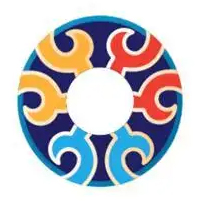Cloisonné Collection Guide: The Art of Appreciation
Look at the texture
The level of the base-making process of cloisonne directly affects the quality of other processes. Generally, cloisonne is mainly made with traditional copper base, sometimes gold or silver base is also used, which is more precious and rare. Modern cloisonne works are more precious by blending traditional techniques with other superb skills.
Look at the shape
The basic shapes of cloisonne are bottle, jar, zun, furnace, box, and bowl, some of which are reference from bronze ware and ceramic ware, so they have similarities in shape with other crafts. Cloisonne is often decorated with decorative elements on the body to show its magnificence and grandeur. In addition, there are various shapes of cloisonne, such as gourd, crane, elephant, fish, etc.
Look at the craftsmanship
The production process of cloisonne can be divided into 108 processes including base-making, filigree wiring, soldering, blue-dotting, blue-firing, polishing, and gilding. Among them, filigree wiring is the most important process that can reflect the level of the artist. The standard for judging the quality is that the filigree wiring should be fine, round, and tidy.
Look at the glaze
The enamel on the surface of cloisonne is refined from various minerals and semi-precious stones, and is filled or painted on the body of the object. It forms a colorful glaze after being baked. Repeated glazing is required to complete a good cloisonne, and the clarity, brightness, and distinct layers of the glaze are the most basic criteria.
Maintenance
After collecting cloisonne works, maintenance is very important. Cloisonne works can be placed in a place without acid or alkali tendency and less dust. When maintaining, avoid washing with water or wiping with a damp cloth, and do not touch objects with acid or corrosive properties. It is best to wear white gloves when moving cloisonne to prevent sweat stains. At the same time, ensure the safety of wooden bases and racks.

